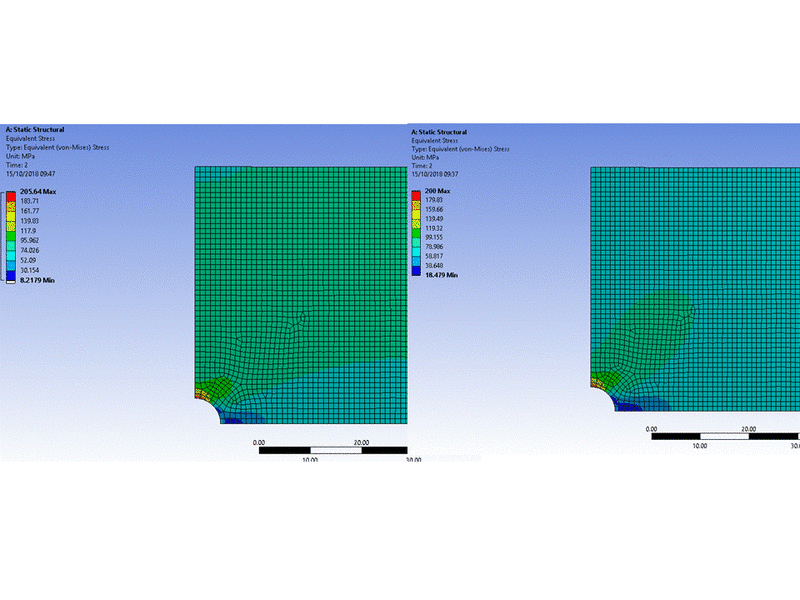A simple example that will highlight what is/might be happening.
Plane stress with a plate with a hole. Applied stress on right edge is 100 MPa, and with the stress concentration factor of about 3, the stress at the hole should be about 3 times that. The material is elastic perfectly plastic with 200 MPa yield stress (YS), and zero hardening or post yield modulus (Et=0)
Now the stresses should be capped at 200 MPa. If we though look at averaged nodal results, that is the stresses that are extrapolated and averaged from the solver stress points (Gauss points, GP), then stresses can go above 200 MPa (see left image below), since a difference in stresses between the GP, leads to the fact that when we extrapolate it can go beyond the YS.
If we now look at the raw GP results (using a command before the solution and at the static structural level: ERESX, NO) then as expected the GP are exactly below or at 200 MPa (see right image below), since the material nonlinear behaviour is enforced there (at GP).
Hope this helps explain why one might see higher stresses above yield when averaging to nodes. Of course another reason is that the post yield modulus will give rise to higher stress for higher plastic strains. In this example it is set to zero so it will always be 200 MPa.
Of course if one looks (assuming that the curve has been assigned to the part, and nonlinear material is set) at the von Mises (VM) and equivalent total strain (ETS) at a point, that (VM,ETS) combination/point should be then on the stress strain curve (VM,ETS).

